Lankester Botanic Garden,
Cartago, Costa Rica
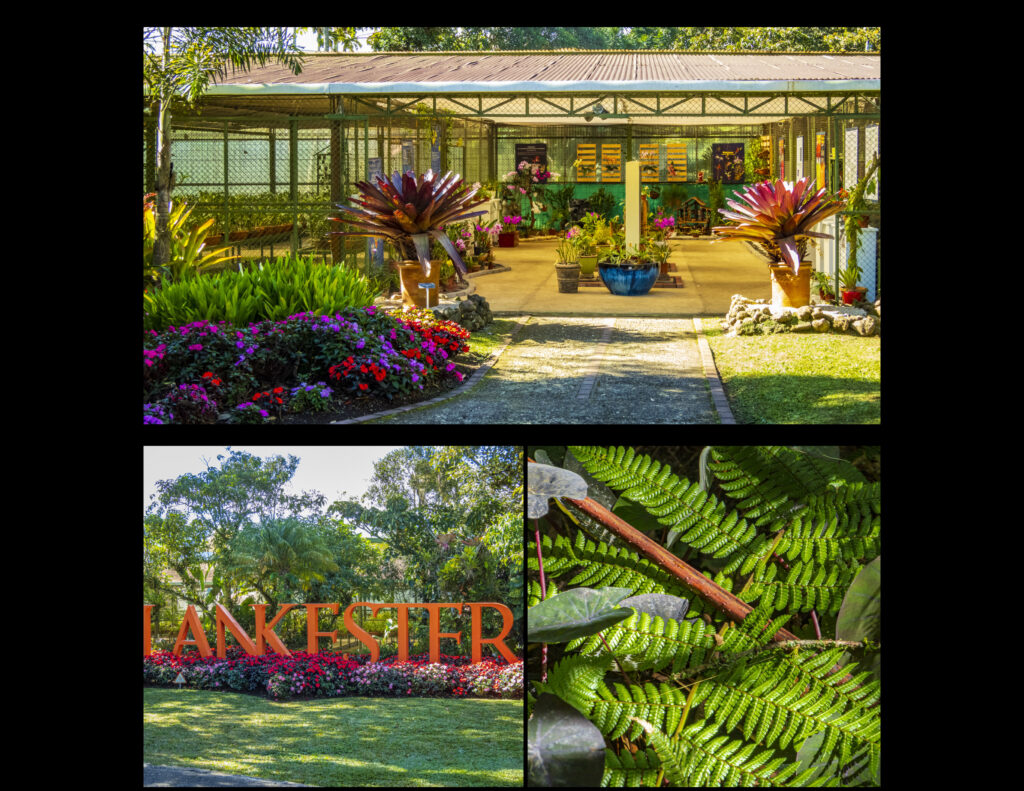
I always photograph orchids, not the ones in grocery stores but in botanic gardens or any orchid exhibitions I visit. I can’t seem to get enough of their vibrant colors and varied shapes. I look at them through the viewfinder to examine the details of their ruffles and wings, to look closely at the tiny faces and figures hidden among the blooms.
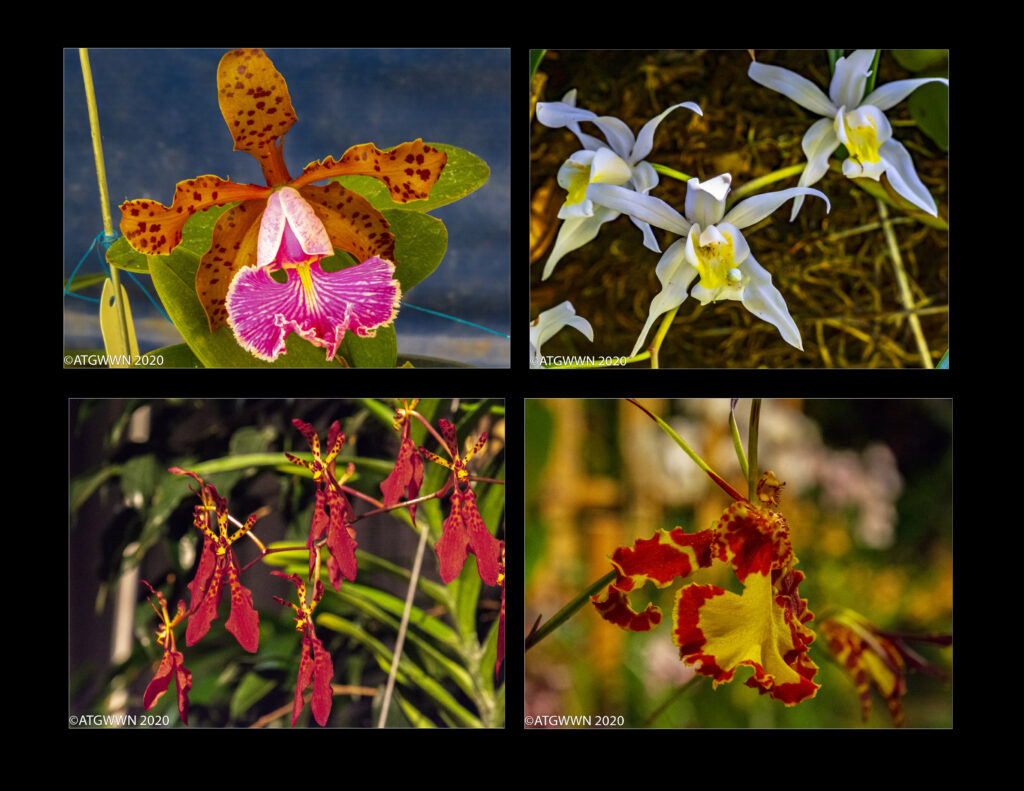
Orchids grow wild in tropical forests perching on host trees and sharing the sunlight in a companionable way as they take nothing from the host. Perching plants or epiphytes are the focus of the Lankester Botanical Garden collections, of the University of Costa Rica.
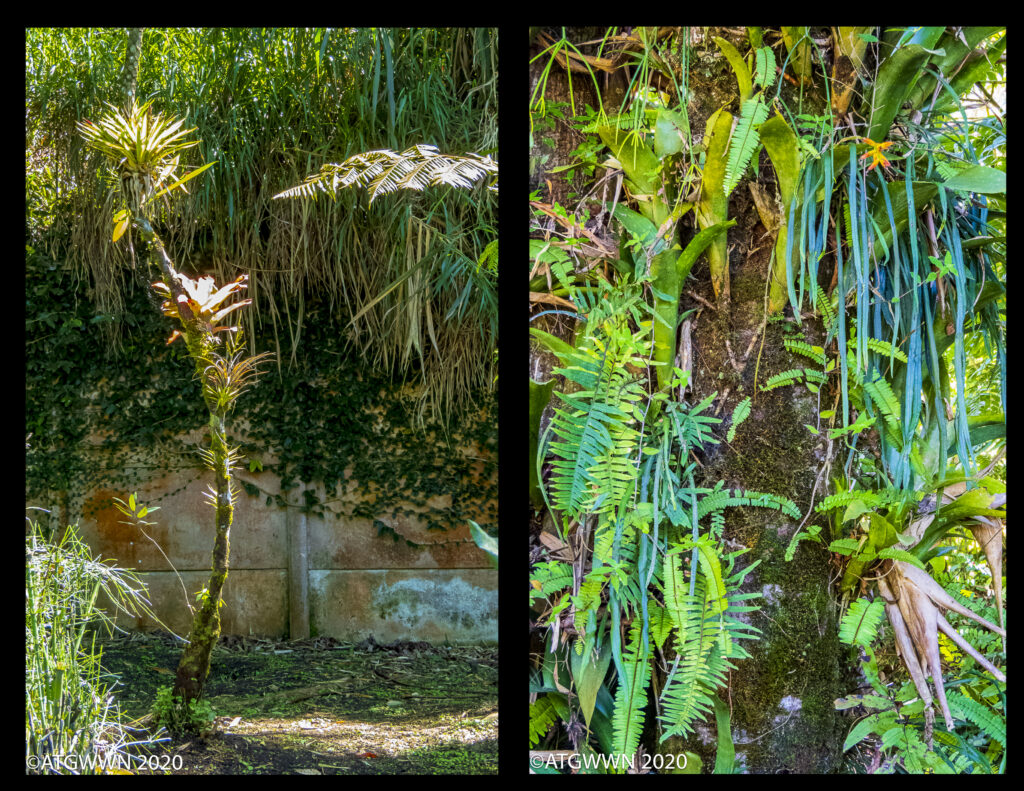
Lankester Garden is named for Charles Lankester, a British amateur botanist who traveled to Costa Rica as a young man in 1910 and fell in love with the country, the climate, and the orchids. The British Victorians were fascinated with orchids and viewed them as symbols of love, virility, and sexuality.
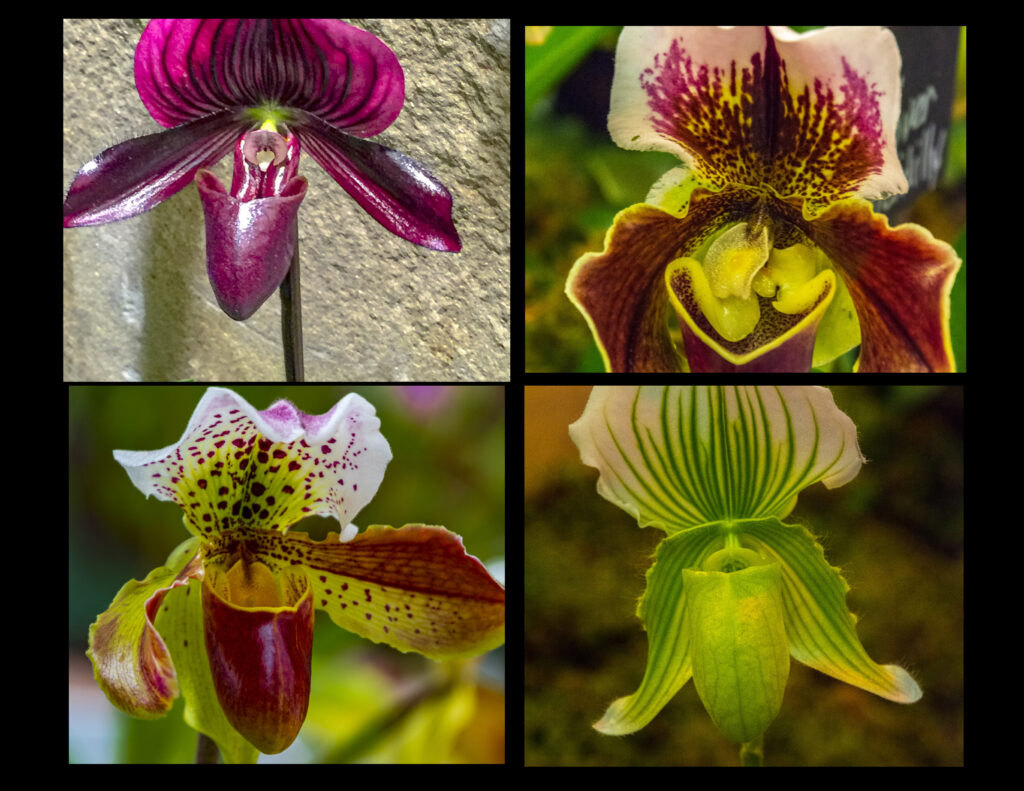
Lankester loved orchids so much he made Costa Rica his home, where he gardened until the age of 90. His work in identifying and growing orchids brought him international recognition. Upon his death, the collection of orchids was so valuable the American Orchid Society and the British Stanley Smith Horticultural Trust joined together to save his garden, donating it to the University to create a Botanic Garden in 1973. This action is one more example of a passionate plant person changing horticultural history and making a lasting contribution. In my garden explorations, I have discovered many passionate gardeners who also live bloomingly long lives.
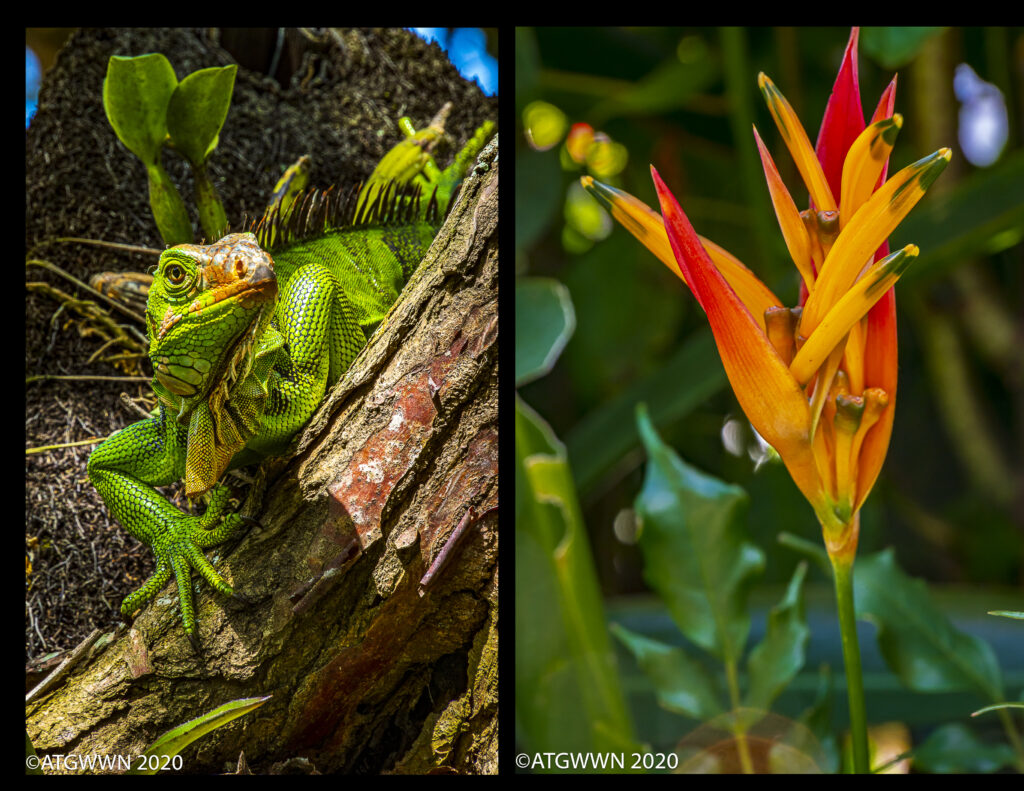
The value of Botanic Gardens cannot be overstated. When gardens are positioned to study and protect plants in varying locations worldwide, they become a vital link in the protection of our very fragile planet. There is no planet if we don’t have plants to feed, heal, and amaze us. Lankester’s location in this tropical climate provides a home for birds, small mammals, reptiles, and insects. Here plant enthusiasts can visit and learn. Knowledge helps us advocate for a healthy planet.
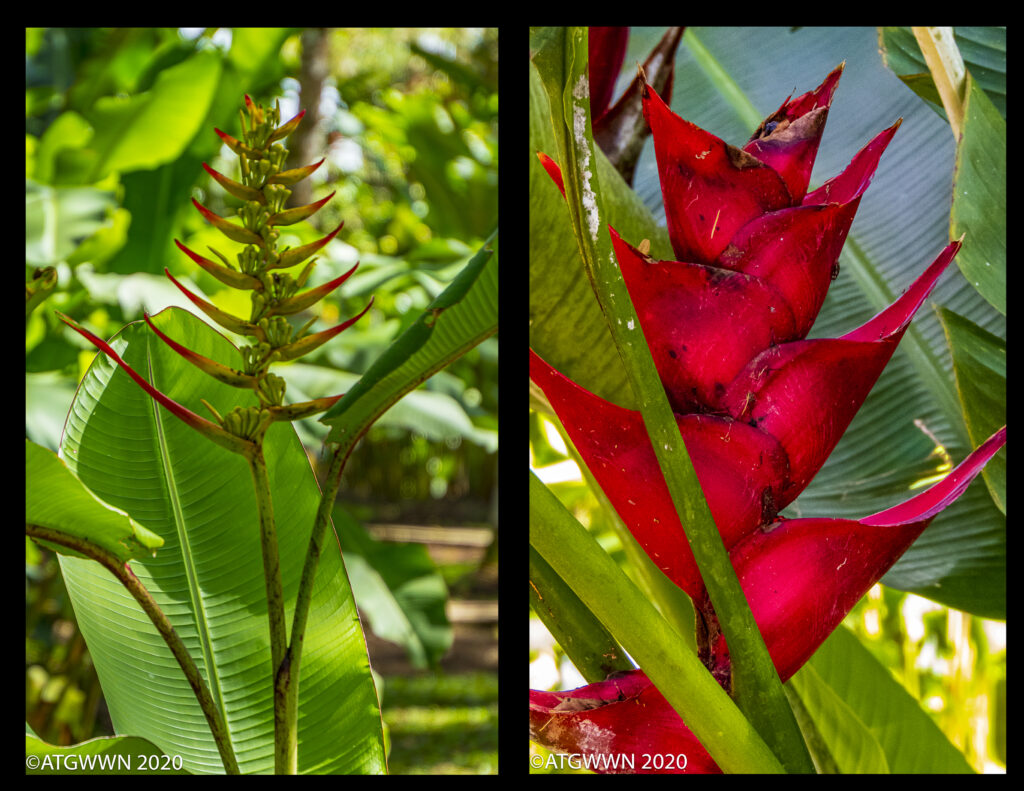
This garden specializes in the study and collection of orchids, ferns, bromeliads, palms, and zingiberales. This is a new word for my plant vocabulary and perhaps for your next scrabble game. Zingiberales are monocots, with tuber roots, or bananas, birds of paradise, heliconias, and gingers. I was aware of these plants but had not been introduced to the family name.
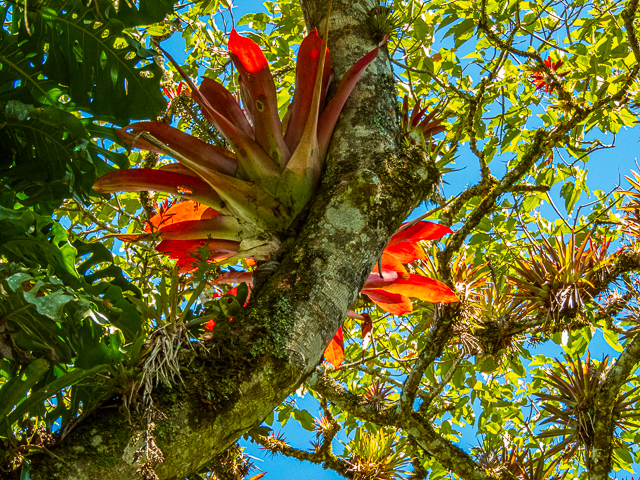
Half of the 27 acres of the Lankester Gardens are classified as a secondary forest, regenerated from scrublands since 1973. Wandering through the grounds I had my very own wild planet moment as we discovered leaf cutter ants marching along with large bright green pieces of leaf carrying it back to their underground home. Watch Ants on the march:
Per National Geographic there are 10,000 known species of ants on the planet. There are 47 varieties of leaf cutter ants, so I don’t know the exact species that entertained me, but it was a great show. You can watch a small reddish ant in the video carrying a large section of leaf moving over roots, rocks, and all other blockades to reach its colony. These ants are so impressive and so determined to complete their task. Ants inspire people in many different ways. Our tour guide, Henry, for example, has a leafcutter ant tattooed on his calf.
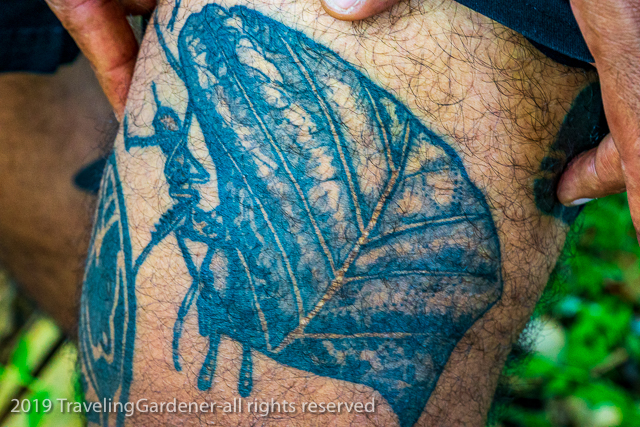
Walking under the trees I looked up at bromeliads, ferns, vines, birds, butterflies, and of course orchids. The facts surrounding orchids boggle the mind.* Lankester grows the largest Tiger Orchid (25′ high 7.62 m), while its collection of 2000 miniature orchids is one of the world’s largest.
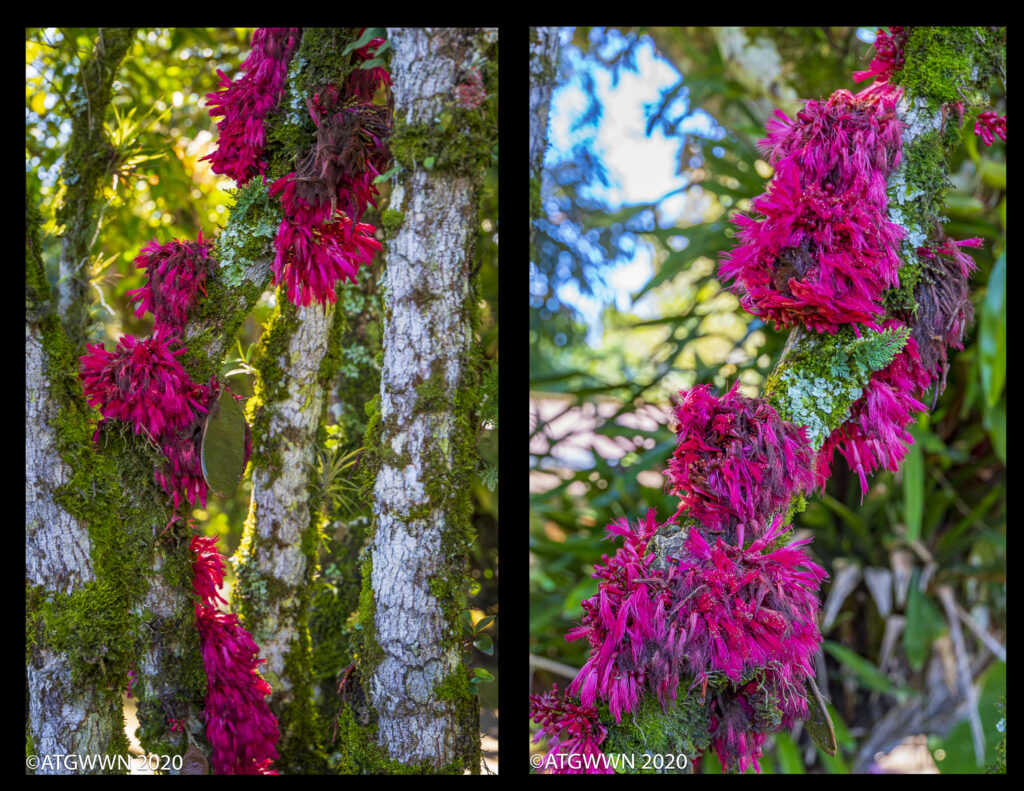
As I wander through gardens, I discover things unfamiliar to me; many times, I can only stand in wonder. I usually take a picture of the plant and its nameplate. When I get time, I go looking for more information. This red furry thing attached to the white tree bark is not a type of orchid, (even though I expected it to be), but a member of the bean and pea family, “the third-largest family of angiosperms after Orchidaceae (orchids)” according to the Tree of Life Project. It seems these bright fuchsia flowers will transform into broad beans.
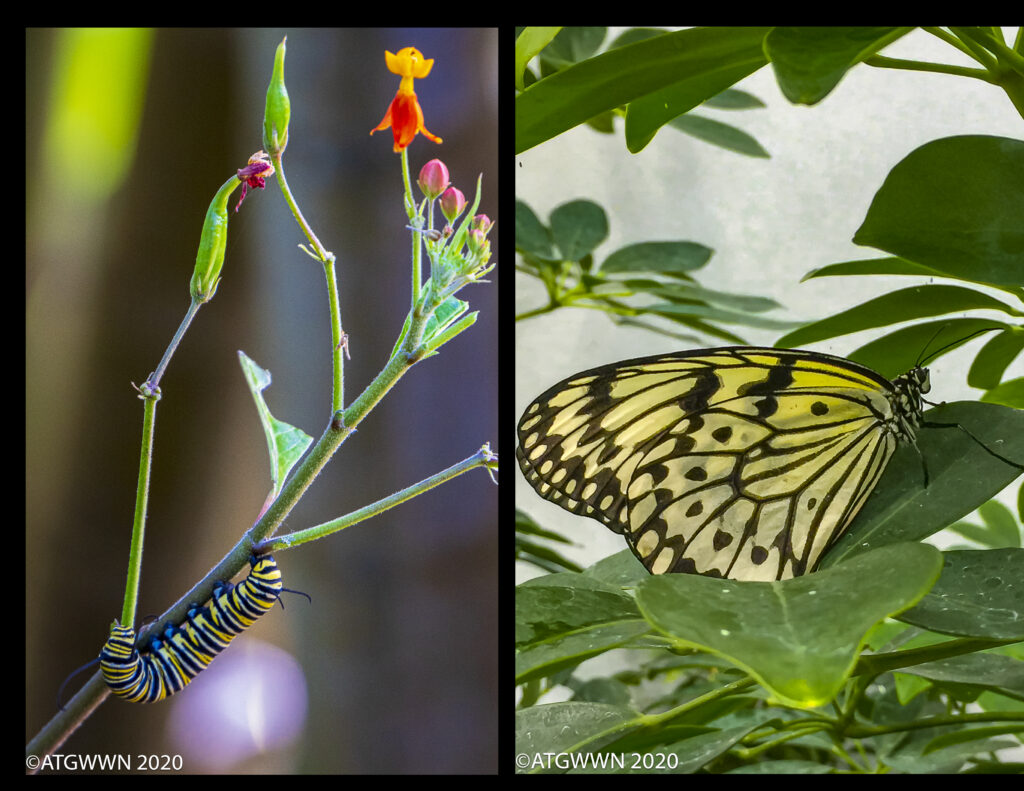
Gardens are full of surprises and easily challenge perceptions. Gardens in tropical climates are dripping in moisture with plants growing on every surface; moss, ferns, webs, and wiggly things are everywhere.
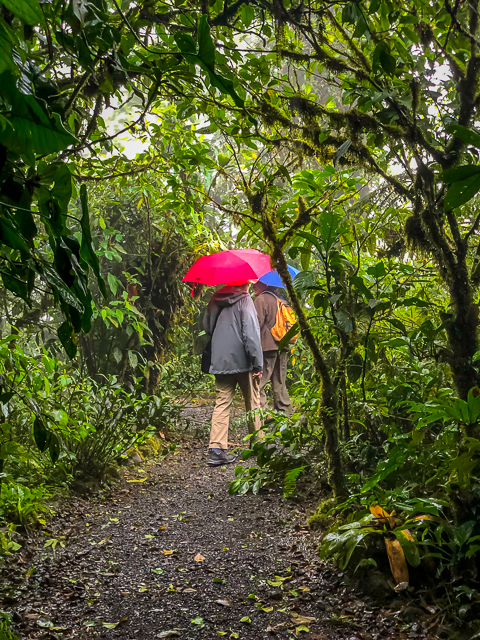 It hasn’t rained in my garden for over 140 days…I wish I could go back to the rainy gardens in Costa Rica.
It hasn’t rained in my garden for over 140 days…I wish I could go back to the rainy gardens in Costa Rica.
Lankester Gardens Website
*The Orchidaceae family is the largest in the plant kingdom, with approximately 800 genera and 28,000 species distributed on all continents. More than 15,000 scientifically documented specimens of nearly 1,000 species are grown in the Garden, the majority native to Mesoamerica.

Lankester Gardens publishes the international orchid journal.
“Our mission is the research of orchids and other epiphytes, to preserve our planet’s biological diversity and to inspire and improve people’s quality of life.” As gardens are meant to do all around the world.

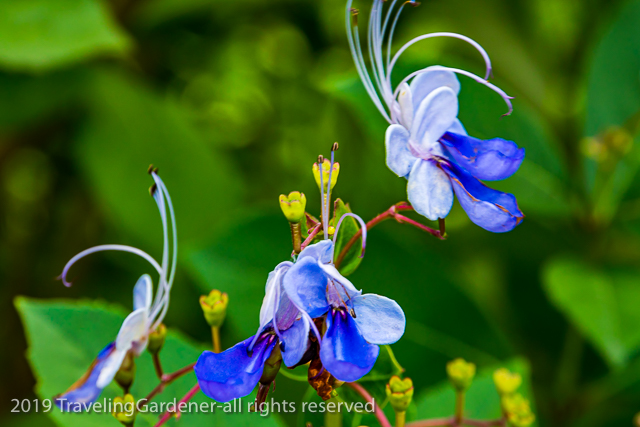
Great article about orchids Linda. Thank you. I hope to visit this wonderful garden some day.
Oh to travel again!!!
I am an orchid lover. Your pictures are fabulous. Your writing is wonderful. It’s like a National Geographic dialogue! I always learn from your newsletter. Your inspiration inspires me.
Thank you
Beautiful colors in the flowers. The ants are very busy.
The ants were amazing and the blooms unending!
Thank you very much for another garden adventure!! Always beautiful, informative and a delight!
Linda, thank you for sharing these stunning plants and determined ants! I was also struck by the Anglo-American work to preserve the gardens. What foresight and cooperation…
How lovely to be able to travel when I can’t get on a plane
With deep appreciation
International cooperation. . . . what a memory!
You said, “There is no planet if we don’t have plants to feed, heal, and amaze us.” How true. Thank you. Sherry
Beautiful! I especially liked the ants carrying the leaves. Well done – and a joy to all.
I was amazed by the ants, and so hard at work.
Thank you for taking us to this beautiful garden, a journey to brighten our days with stunning photographs and graphic text ..thank you Jan
So good to hear from you, and delighted you enjoyed it.